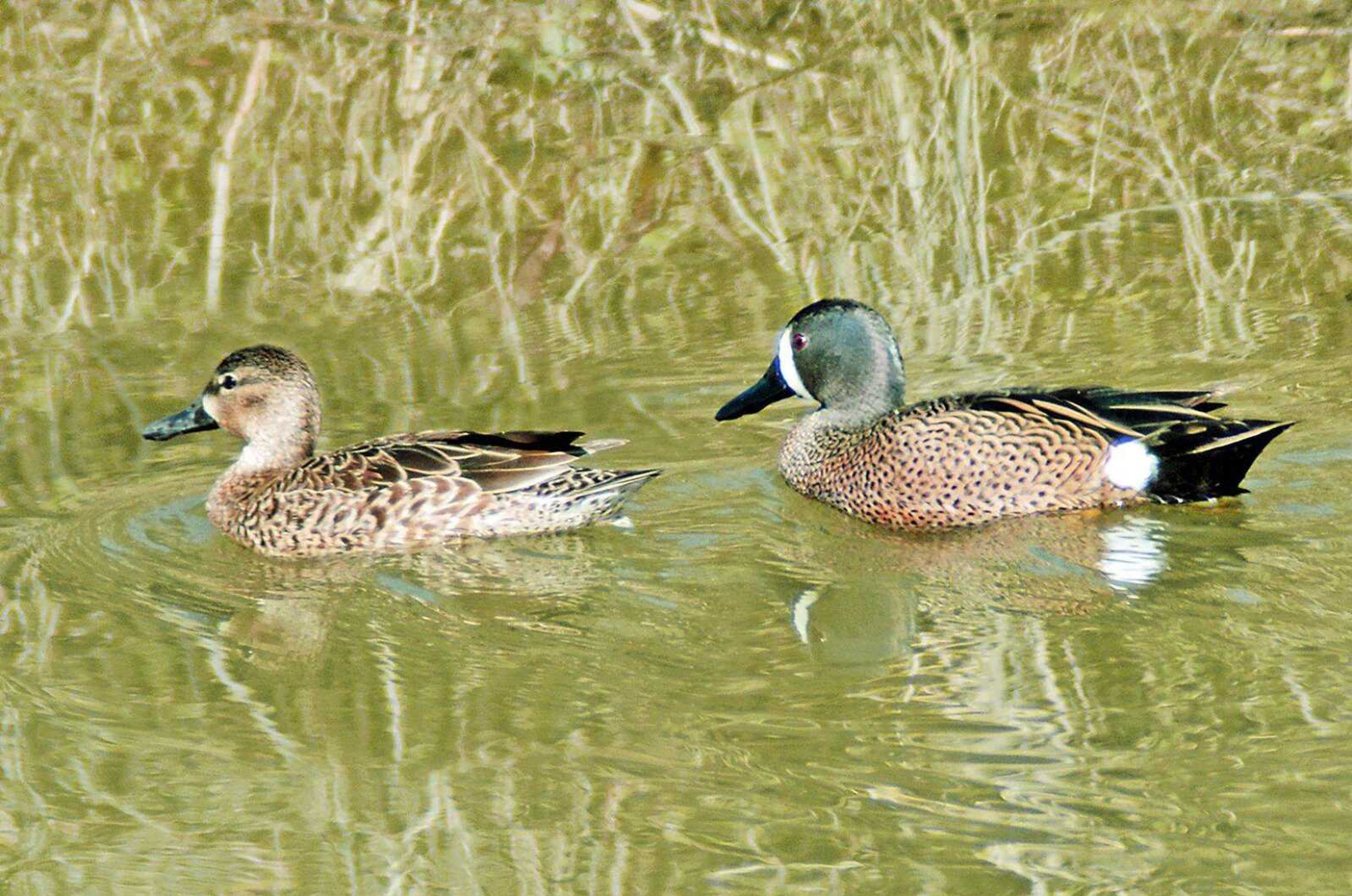Pair of blue-winged teals
The blue winged teal is a common dabbling duck that measures about 15 inches long and weighs less than one pound. The adult male has a distinctive white vertical bar between the eye and beak. The female is a bit smaller and is mottled brown. Both sexes display a blue patch of feathers on the shoulders of their wings when flying...
The blue winged teal is a common dabbling duck that measures about 15 inches long and weighs less than one pound. The adult male has a distinctive white vertical bar between the eye and beak. The female is a bit smaller and is mottled brown. Both sexes display a blue patch of feathers on the shoulders of their wings when flying.
A dabbling duck typically feeds by upending and dabbling, rather than diving under water.
This ground-nesting duck is native to North America and generally migrates farther north than Southeast Missouri to nest and raise young. Blue-winged teal frequent swampy areas, ponds and shallow slow-running streams with abundant plant life. Their diet consists mainly of aquatic plants and insects found in water.
Snapping turtles, foxes, raccoons and mink are common predators of blue-winged teal. Large fish such as bowfin and largemouth bass, and cotton-mouth snakes will prey on baby blue winged teal as they swim on the surface. I took this photo April 8 as the pair swam very close together as if connected by an imaginary tether.
Through the Woods is a weekly nature column by Aaron Horrell. Find this column at semissourian.com to order a reprint of the photo. Find more of Horrell's work at the Painted Wren Gallery in downtown Cape Girardeau.
Connect with the Southeast Missourian Newsroom:
For corrections to this story or other insights for the editor, click here. To submit a letter to the editor, click here. To learn about the Southeast Missourian’s AI Policy, click here.










